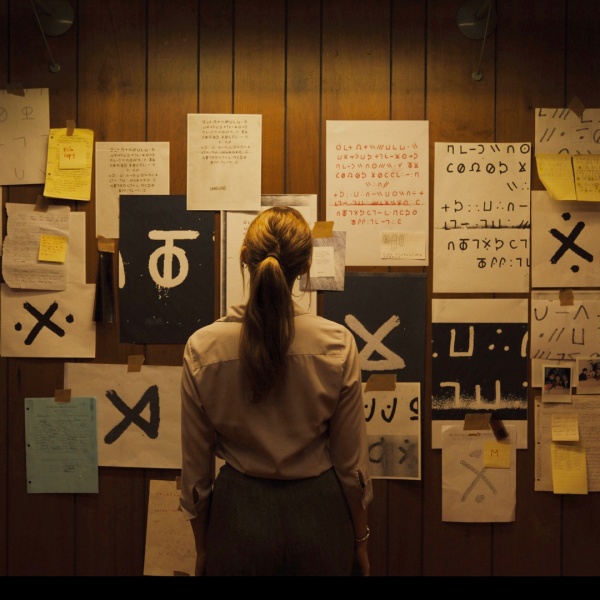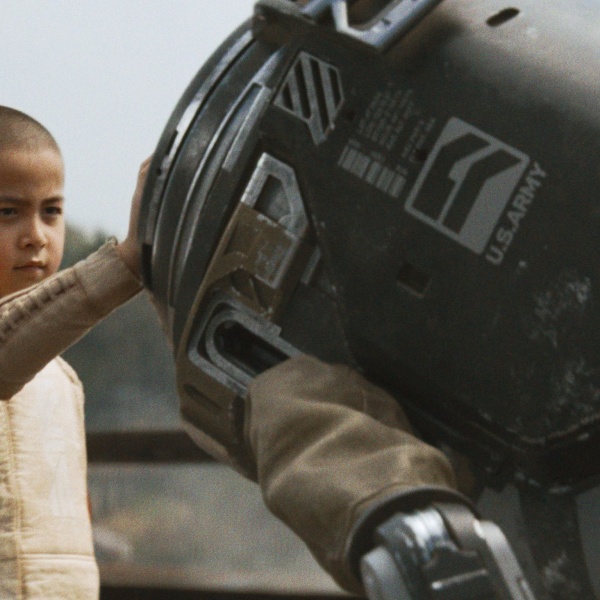Perhaps the only sane way to tell a story about the U.S. Immigration system is to make it as absurd and fantastical as possible, and Julio Torres’ “Problemista,” like his HBO series “Los Espookys,” is packed with visually elaborate set pieces that feel handmade and human. But the most complex build of the film — one that also features a child’s impossible dream castle and a maze of immigration offices laid out like the world’s worst ant farm — was located in Torres’ vision of the digital world.
Larry Owens personifies the website Craigslist, to which Torres’ character Alejandro turns to raise the cash to process his work sponsorship forms for his visa, assuming that the mercurial Elizabeth (Tilda Swinton) will, in fact, sign them. Over the course of “Problemista,” Alejandro and Craiglist commune several times, first and most spectacularly with Ale falling through, one assumes, the wormhole tubes that make the internet go and then hanging on by a net. Watch the scene is the clip below.
Craigslist’s domain is, fittingly, an impossible trash heap of Ikea furniture, lamps, musical instruments, and shoes. It’s a pedestrian cross between the Cave of Wonders in “Aladdin” and a trash island floating in the middle of the Pacific Ocean, both of which production designer Katie Byron cited as references. But it’s one thing to have those images in mind and another thing entirely to make them work on an indie film budget, in collaboration with the hair, makeup, costume, and VFX departments, which all played a part in bringing Craigslist to life.
Working out the physical logic of Craigslist, Byron settled on having Alejandro sink down into it, like falling through a floating pile of craigslist for sale items, until he reaches “the belly of the beast,” as she called it. “It’s sort of like getting sucked into the cave of wonders,” Byron told IndieWire. “Like, there’s a seductive nature to it.”
That combination of seductiveness and mundanity makes the space strange and compelling. But Byron and Torres amp up its singularity by mixing real objects with very obviously artificial 2D painting and backdrops (by the same artist who created all of the egg paintings for the film).
“Julio really liked the flatness of two-dimensional painted objects mixed with real objects, and [we were] sort of playing with this like theatrical kind of artifice. So on the top of Craigslist, there’s a lot of two-dimensional paintings of items, and then within the belly of the beast, there was also this amazing iron cage, and then [we] draped a net in it, and then hung everything to the sides,” Bryon said.
The production team spent a full week attaching all of Craigslist’s possessions to the iron cage, building what Byron called a womb space that they could then light from the outside so that it could glow. But collecting enough items to create Craigslist’s menagerie took even longer; Byron and her team worked on that for the entire shoot.

“Obviously, we were an indie film, so we didn’t have a lot of money, and we were also drilling into a lot of things, so you couldn’t just go to a prop house and fill up a truck,” Byron said. “So it was a real joy putting that set together because it was like two months of our set decorator and buyers accumulating stuff and then putting it up on the walls.”
How all of the Craigslist objects were assembled is also part of the joy of that set piece, and the challenge. The comedy of Craigslist, along with much of “Problemista,” is in seeing everything both as extremely ordinary and cheap and yet at the same time a little bit mystical and wondrous. “We talked a lot about the design of the film, but Julio, what he cared about the most was whether or not we could make the trash in New York City feel right. Because we had all these trash piles around the city and he just really wanted to play up the comedic element of what trash in New York City looks like,” Byron said.
Going from Alejandro’s first encounter with Craigslist to a pile of trash sitting in a puddle, Torres, Byron, and set decorator Kendall Anderson visually connect the two conglomerations of random stuff. They’re both absurd — which, perhaps, provides a bit of hope that Alejandro’s dream isn’t.



